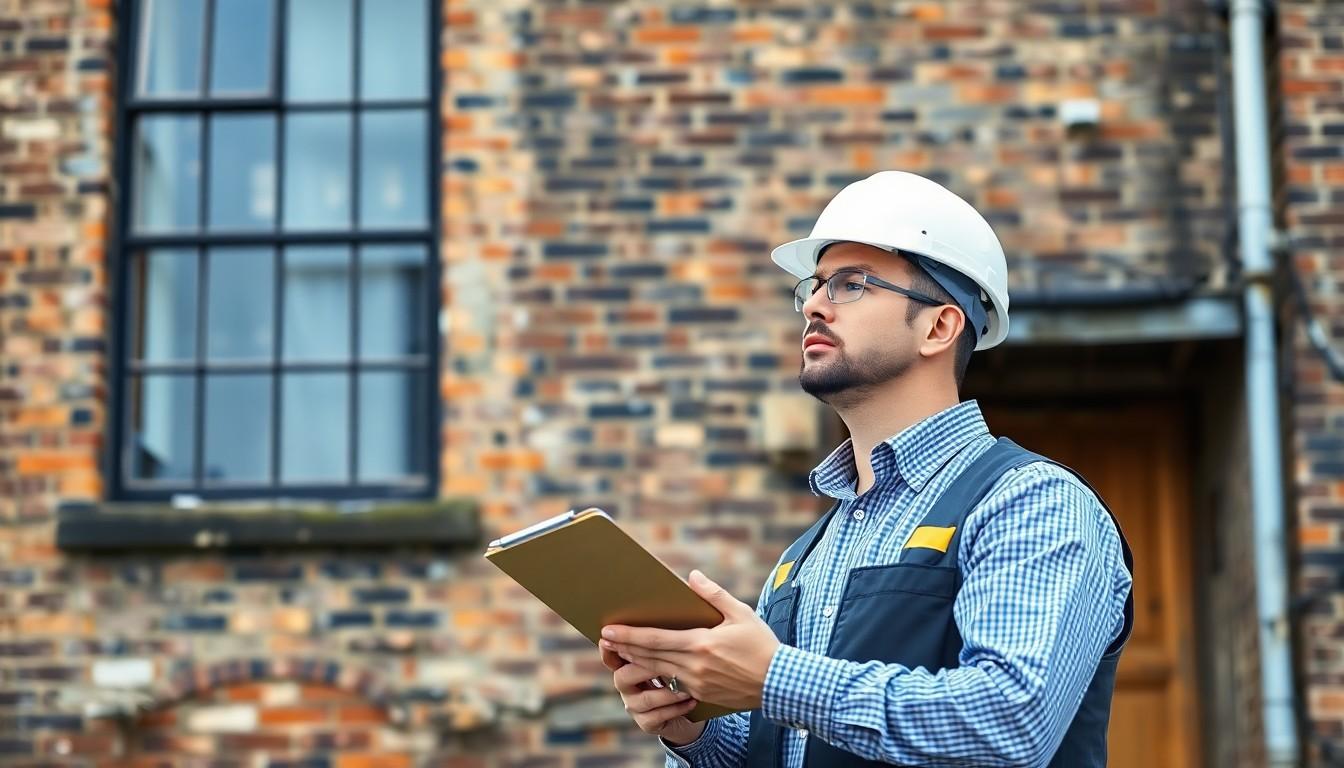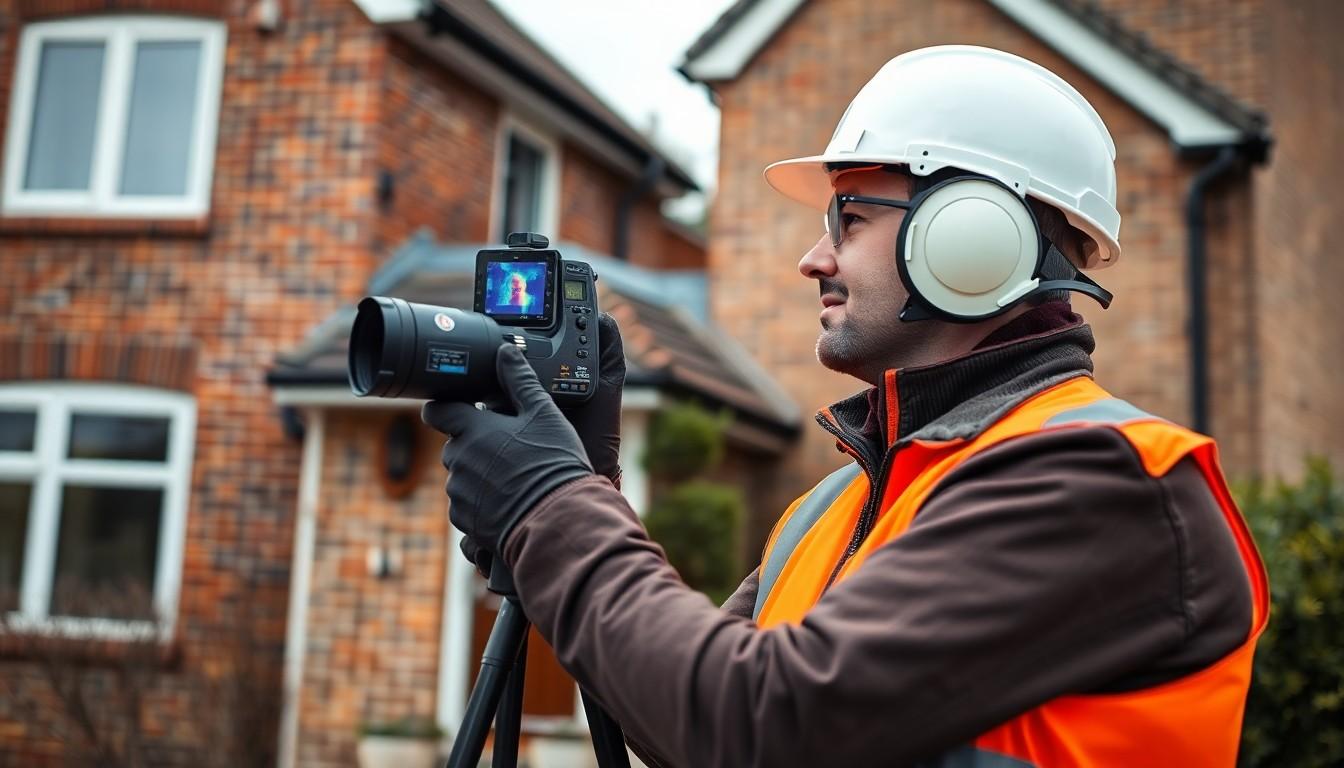Category: Building surveying
Building Surveys: A Complete Guide to Property Assessments & Structural Inspections
Ever wondered what keeps buildings safe, functional and valuable? Building surveying plays a crucial role in the construction and property industry ensuring structures meet essential standards and regulations. As a specialised field combining technical expertise with practical problem-solving it’s fundamental to maintaining our built environment.
You’ll find building surveyors at the heart of construction projects new builds renovations and property maintenance. They’re the professionals who assess structural integrity identify defects and provide expert guidance on everything from restoration work to energy efficiency. Whether you’re a property owner developer or someone interested in the field building surveying offers fascinating insights into how we can preserve protect and enhance our buildings for the future.
Key Takeaways
- Building surveying is essential for assessing structural integrity, identifying defects and ensuring buildings meet safety standards and regulations
- Building surveyors must hold RICS accreditation and possess expertise in construction methods, building pathology, and technical analysis skills
- There are three main types of building surveys: Level 3 (Full Building Survey), Level 2 (Homebuyer Survey), and Level 1 (Condition Report), each offering different depths of inspection
- Modern surveying combines traditional visual inspections with advanced technologies like thermal imaging, moisture meters and laser levels for accurate defect detection
- Conservation and heritage surveys require specialist knowledge of listed building regulations and traditional construction methods to preserve historical authenticity
- Commercial property surveys focus on due diligence and dilapidation assessments, providing detailed reports on structural integrity, compliance and maintenance requirements
What Is Building Surveying
Building surveying examines a property’s physical condition through comprehensive inspections. A building survey delivers detailed assessments of structural elements, construction quality, defects, and maintenance requirements.
Core Responsibilities of a Building Surveyor
Building surveyors perform essential tasks in property evaluation and maintenance:
- Conduct thorough structural inspections to identify defects and safety hazards
- Assess internal systems including electrical wiring, plumbing, heating, and ventilation
- Document building conditions through detailed reports and photographs
- Recommend specific repairs and maintenance with cost estimates
- Review compliance with building regulations and safety standards
- Monitor renovation and construction projects
- Provide technical guidance on property improvements
Required Qualifications and Skills
Professional building surveyors require specific credentials and capabilities:
Essential Qualifications:
- RICS (Royal Institution of Chartered Surveyors) accredited degree
- Professional membership with RICS
- Building surveying certification
- Health and safety certifications
- Construction methods and materials knowledge
- Building pathology expertise
- Computer-aided design (CAD) proficiency
- Project management abilities
- Legal and regulatory understanding
- Analytical problem-solving
- Clear communication
- Attention to detail
- Physical fitness for site inspections
- Time management
| Survey Type | Level | Detail Level |
|---|---|---|
| Condition Report | 1 | Basic |
| Homebuyers Report | 2 | Intermediate |
| Building Survey | 3 | Comprehensive |
Types of Building Surveys

Building surveys provide detailed assessments of property conditions through professional inspections. The type of survey depends on the property’s age, condition, and intended use.
Full Building Survey
A full building survey delivers the most comprehensive property inspection available. This extensive examination includes:
- Detailed analysis of structural elements
- Documentation of visible defects in walls, roofs, floors
- Assessment of potential hidden problems
- Specific repair recommendations with cost estimates
- Technical advice for legal representatives
- Evaluation of building services systems
- Identification of damp issues or timber defects
Homebuyer Survey
A homebuyer survey offers a mid-level assessment suitable for conventional properties in reasonable condition. This survey includes:
- Surface-level examination of accessible areas
- Traffic-light ratings for property conditions
- Market valuation of the property
- Insurance rebuild cost assessment
- Identification of obvious defects
- Basic maintenance recommendations
- List of urgent repairs needed
- Visual inspection of main elements
- Clear ratings for property conditions
- Highlight of legal issues requiring attention
- Documentation of obvious problems
- Basic overview of services
- Summary of risks to the building
- Brief maintenance suggestions
| Survey Type | Depth of Inspection | Property Suitability | Valuation Included |
|---|---|---|---|
| Full Building | Comprehensive | Older/Complex/Modified | Optional Extra |
| Homebuyer | Intermediate | Standard/Modern | Yes |
| Condition Report | Basic | New/Simple | No |
Building Defects and Diagnostic Methods

Building defects require systematic detection methods and professional diagnostic tools to ensure accurate assessment. Modern surveying techniques combine traditional visual inspections with advanced technology for comprehensive property evaluation.
Common Structural Issues
Structural defects manifest in various forms throughout buildings:
- Foundation Problems: Subsidence cracks in walls measuring wider than 15mm indicate serious foundation issues
- Wall Deterioration: Vertical cracks in brickwork external walls signal potential structural movement
- Roof Defects: Sagging roof lines expose timber decay affecting load-bearing capacity
- Damp Issues: Rising damp up to 1.5m height on walls suggests compromised damp proof course
- Timber Decay: Wet rot in floor joists causes up to 50% reduction in structural strength
Common indicators of these issues include:
- Diagonal cracks above doors
- Uneven floor surfaces
- Doors failing to close properly
- Separated window frames
- Bulging external walls
Modern Survey Technologies
Advanced diagnostic equipment enhances defect detection accuracy:
- Thermal imaging cameras detect heat variations indicating insulation gaps
- Moisture meters measure dampness levels from 7% to 99% relative humidity
- Laser levels identify structural movement to within 1mm accuracy
- Borescopes examine cavities up to 10m deep without invasive investigation
- Ultrasonic testing reveals internal concrete defects
- Electromagnetic scanning locates steel reinforcement positioning
- Acoustic testing identifies hollow areas in renders
- Resistivity measurements detect corrosion in steel elements
| Technology | Detection Capability | Accuracy Range |
|---|---|---|
| Thermal Imaging | Heat loss & moisture | ±2°C |
| Moisture Meters | Dampness levels | ±3% |
| Laser Levels | Movement | ±1mm |
| Borescopes | Cavity inspection | 10m depth |
Building Conservation and Heritage Surveys
Building conservation and heritage surveys examine historic structures to assess their condition, identify defects and determine necessary restoration work. These specialized assessments protect architectural heritage while ensuring buildings remain functional and safe.
Listed Buildings
Listed buildings hold special architectural or historic interest requiring expert surveying approaches. Grade I, Grade II* and Grade II listings indicate different levels of historical significance and protection requirements. Key aspects of listed building surveys include:
- Recording original architectural features such as cornicing, fireplaces and timber frames
- Documenting alterations made throughout the building’s history
- Assessing traditional construction materials and methods
- Identifying appropriate repair techniques that preserve character
- Evaluating compliance with listed building regulations
Conservation Principles
Conservation principles guide the assessment and maintenance of historic buildings through established standards:
- Minimum intervention to preserve original fabric and features
- Use of traditional materials matching the existing construction
- Reversible alterations that avoid permanent changes
- Regular maintenance to prevent deterioration
- Detailed documentation of building condition and works
- Retention of historic character while enabling modern use
| Conservation Principle | Purpose |
|---|---|
| Minimum Intervention | Preserves original building fabric |
| Traditional Materials | Maintains historic authenticity |
| Reversible Changes | Protects future restoration options |
| Regular Maintenance | Prevents accelerated deterioration |
Companies like Purcell and AECOM conduct specialist condition surveys that analyse defects, assess buildings at risk and provide grant-related guidance for historic properties.
Legal and Regulatory Framework
Building surveying operates within a structured legal framework governed by the Royal Institution of Chartered Surveyors (RICS) in the UK. This framework establishes professional standards for surveyors while ensuring compliance with building regulations and safety requirements.
Building Regulations
Building regulations form the cornerstone of construction standards under Part I of the Building Act 1984. These regulations establish specific requirements for:
- Planning permissions for new construction projects
- Structural safety standards for existing buildings
- Energy efficiency requirements for properties
- Fire safety measures in building design
- Accessibility provisions for public spaces
- Ventilation specifications for indoor environments
| Regulatory Component | Key Requirements |
|---|---|
| Planning Permission | Mandatory for new builds & major alterations |
| Building Control | Regular inspections during construction |
| Completion Certificate | Required before occupancy |
Health and Safety Requirements
Health and safety regulations in building surveying protect workers, occupants, and the public during inspections and construction work. Key requirements include:
- Risk assessments before conducting surveys
- Personal protective equipment usage on site
- Safe working practices at height
- Asbestos management protocols
- Site security measures
- Emergency procedures documentation
| Safety Element | Compliance Measure |
|---|---|
| Site Access | Controlled entry points |
| PPE | Hard hats, safety boots, high-vis clothing |
| Working at Height | Certified equipment & trained personnel |
The RICS guidelines serve as the industry benchmark for professional conduct and competency in building surveying practices. These standards ensure surveyors maintain high levels of expertise while adhering to ethical considerations in their assessments and recommendations.
Commercial Property Surveys
Commercial property surveys provide comprehensive assessments of buildings’ structural integrity, condition and potential defects. Professional building surveyors conduct these detailed examinations to deliver objective reports tailored to client requirements.
Due Diligence Surveys
Due diligence surveys examine commercial properties before purchase or lease transactions. These assessments:
- Identify structural defects that affect property value
- Document building compliance with regulations
- Evaluate mechanical electrical systems functionality
- Assess environmental risks like asbestos presence
- Calculate repair cost estimates
- Review building documentation records
Dilapidation Reports
Dilapidation reports document a property’s condition at specific points during tenancy. Key components include:
- Photographic evidence of existing damage
- Detailed descriptions of wear and tear
- Lists of tenant repair obligations
- Estimated costs for restoration work
- Comparative analysis between entry exit conditions
- Recommendations for required remedial actions
Commercial property surveys focus on providing actionable insights through:
| Survey Component | Key Details |
|---|---|
| Building Structure | Foundation integrity wall stability roof condition |
| Systems Analysis | HVAC electrical plumbing safety equipment |
| Documentation | Photos floor plans maintenance records |
| Cost Estimates | Repair projections maintenance budgets replacement values |
Each survey type follows standardized procedures while adapting to specific property characteristics age construction methods property use requirements.
Conclusion
Building surveying stands as a cornerstone of the construction and property industry providing essential insights into structural integrity safety and compliance. It’s a multifaceted profession that requires extensive knowledge technical expertise and professional certification.
Whether you’re dealing with historic buildings commercial properties or residential homes professional building surveyors play a vital role in protecting your investment. They’ll help you make informed decisions about property maintenance repairs and improvements while ensuring compliance with relevant regulations.
By engaging qualified building surveyors you’re not just getting an assessment – you’re investing in your property’s future. Their expertise helps maintain building standards preserve architectural heritage and enhance property value through comprehensive analysis and professional guidance.
Frequently Asked Questions
What is building surveying?
Building surveying is the professional examination of a property’s physical condition through comprehensive inspections. Surveyors assess structural integrity, identify defects, and provide expert guidance on maintenance and improvements. This service is essential for ensuring buildings are safe, functional, and compliant with regulations.
What qualifications does a building surveyor need?
A building surveyor typically needs an RICS-accredited degree, professional membership, and relevant certifications in building surveying and health and safety. They should also possess knowledge of construction methods, building pathology, CAD proficiency, and project management skills, along with strong analytical and communication abilities.
What types of building surveys are available?
There are three main types of surveys: Full Building Survey (most comprehensive), Homebuyer Survey (mid-level assessment), and Condition Report (basic overview). The Full Building Survey provides detailed structural analysis, the Homebuyer Survey offers surface-level examination with valuation, and the Condition Report gives a straightforward overview of property condition.
How do surveyors identify building defects?
Surveyors use various diagnostic methods and professional tools, including thermal imaging, moisture meters, laser levels, and borescopes. They look for signs such as cracks, uneven floors, bulging walls, and damp issues. This systematic approach helps accurately assess structural problems and hidden defects.
What is special about heritage building surveys?
Heritage building surveys focus on historic structures and require specialist knowledge of conservation principles. They involve recording original features, documenting alterations, and evaluating compliance with listed building regulations. These surveys emphasise minimum intervention, traditional materials use, and detailed documentation.
What regulations govern building surveying in the UK?
Building surveying is primarily regulated by the Royal Institution of Chartered Surveyors (RICS) and the Building Act 1984. These regulations cover planning permissions, structural safety, energy efficiency, fire safety, and accessibility. Surveyors must also comply with health and safety regulations and RICS professional guidelines.
What does a commercial property survey involve?
Commercial property surveys provide comprehensive assessments of building condition, structural integrity, and potential defects. They include due diligence surveys for purchase or lease transactions and dilapidation reports documenting property condition during tenancy. These surveys follow standardised procedures while adapting to specific property requirements.
